|
It is fairly commonly
accepted
that there are four recognized species in the genus Lophophora.
L. williamsii is the best known peyote
plant.
Of the four accepted species this is the only
one that has hallucinogenic properties.
Lophophora williamsii
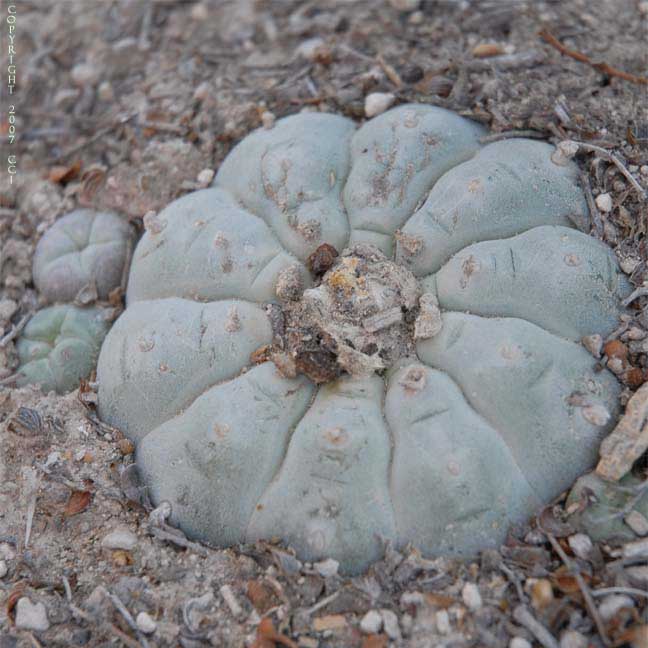
|
L. williamsii has at
least
two forms that need more study.
Lophophora williamsii in Coahuila.
These plants appear to be similar to if not
identical with the small and scattered West Texas
populations.
We know that the northern populations of L.
williamsii (including all of the known US populations and most
probably the Coahuilan plants) are self-fertile. This means that they
outcross very little and within a given population there is little to
no genetic diversity among individuals.
(Based on the preliminary DNA data published in
Chapter IV of Dr. Terry's dissertation.)
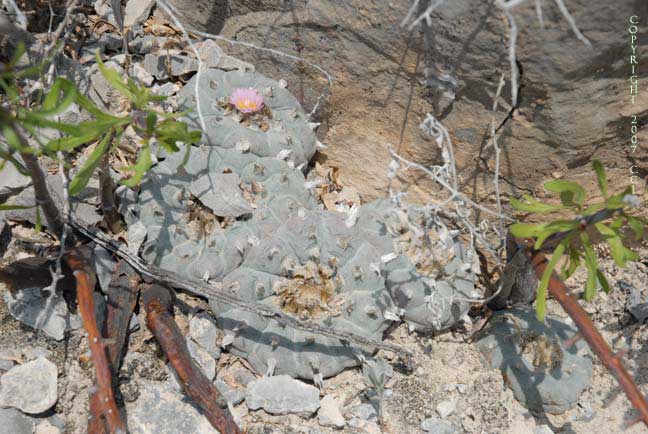
|
Lophophora williamsii in Tamaulipas.
These plants appear to be morphologically
similar
to if not identical with the South Texas
populations.
It is not known if these Tamaulipan plants are
also similar to the South Texas plants in terms of their fertility
(self-fertile) or if they are more like the El Huizache plants that
known to be self-sterile (next image below) or if they lie somewhere in
between.
Their DNA can tell us the answer to this
question.
This underlines the need for a DNA-based
genetic study across the geographic range of the genus.
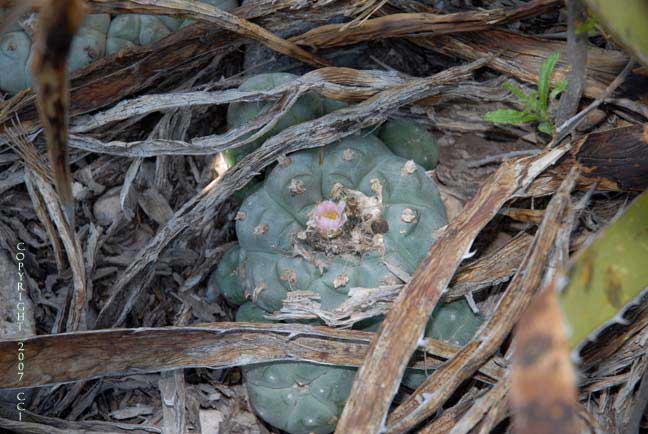
|
Lophophora williamsii at El Huizache.
Greenhouse breeding experiments by Bohata and
colleagues in the Czech Republic and Koehres in Germany have shown that
plants from this population are self-sterile and therefore obligate
outcrossers (leading one to suspect a great deal of genetic diversity
with many genotypes occurring in a single population).
More images are on page 17
& 18.
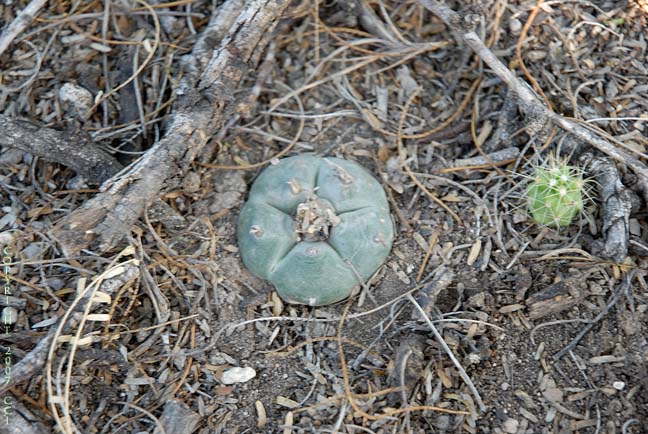
|
Lophophora diffusa is
a
more southerly species that has been long accepted by botanists.
Lophophora diffusa in Queretaro.
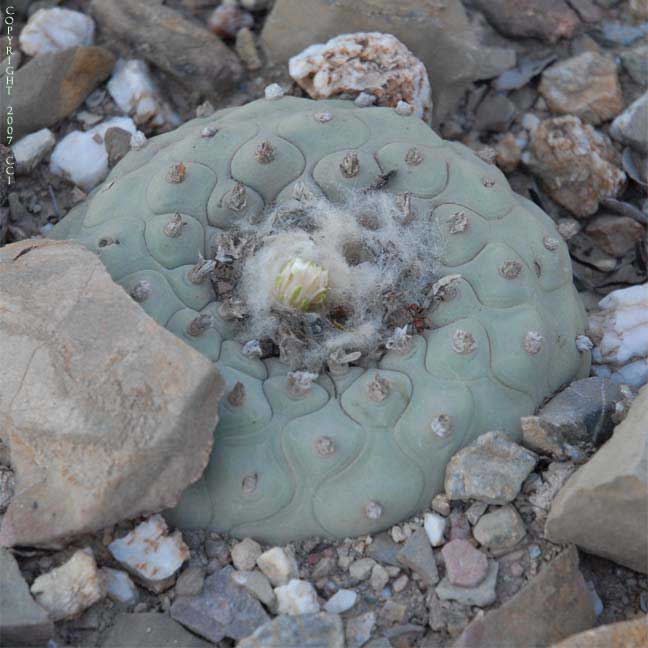
|
L. fricii is a
northerly
form with a chemical profile more resembling that of the southern L.
diffusa than the much closer L. williamsii.
As is true for L. williamsii, it also
has two distinct forms in need of more study.
These populations are geographically separated
by around 20-25 miles.
Lophophora fricii growing in montane
surroundings.
These are more often solitary than
offsetting.
These love growing among rocks. They are found in mountainous terrain
above a certain elevation but never on the lower slopes.
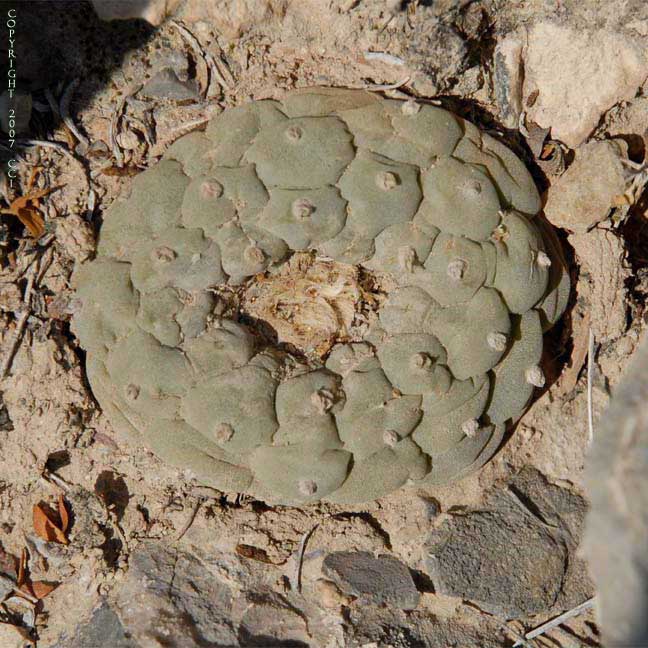
|
Lophophora fricii growing in silty flats.
These are predominantly wildly caespitose and
often
form clumps of dozens of crowns.
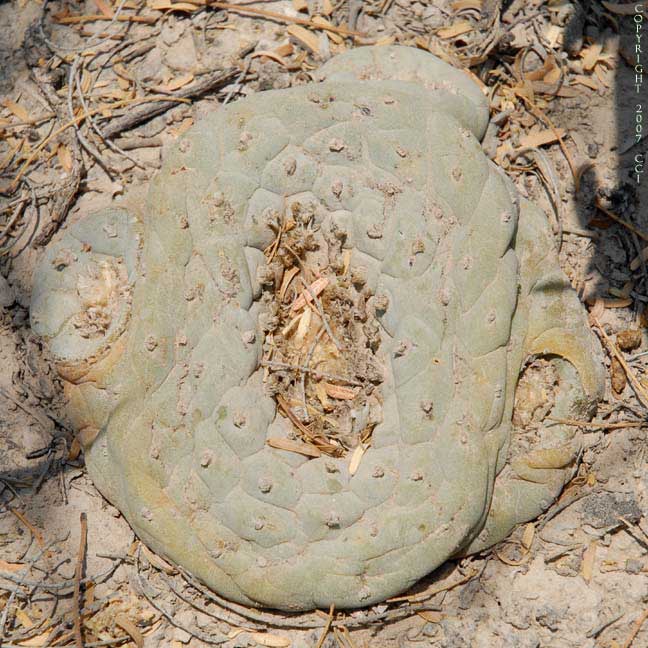
|
L. koehresii is the
most
recently accepted new taxon in the genus.
Lophophora koehresii
L. koehresii's range overlaps L.
williamsii range in part but it does not share the same habitat and
instead prefers mud flats.
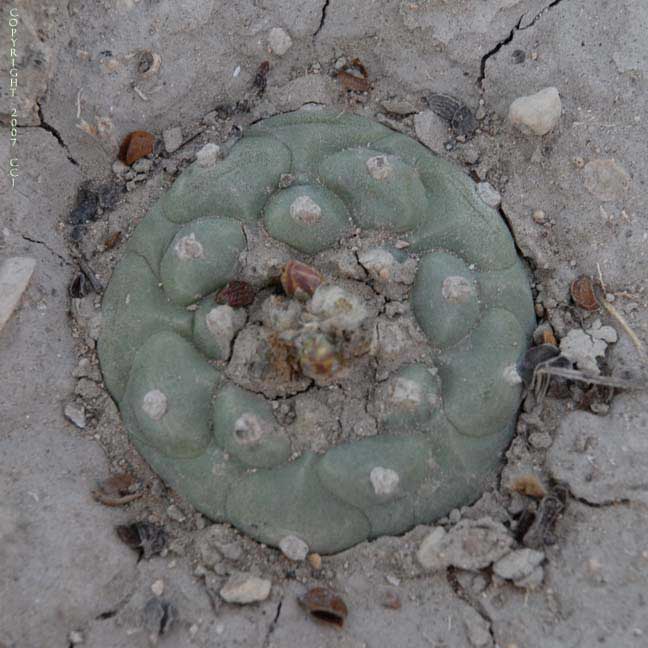
|
The exact relationship of
these
species is a question that has long fascinated and often frustrated
botanists.
To be able to know the answers using modern
analytical techniques, the DNA of bona fide wild populations
would be required for study.
It was with this in mind that field research
was organized with the help of our academic colleagues in Mexico and
the pertinent regulatory institutions of Mexico and the USA.
More recently a fifth new miniature
species of Lophophora was described.
Lophophora alberto-vojtechii
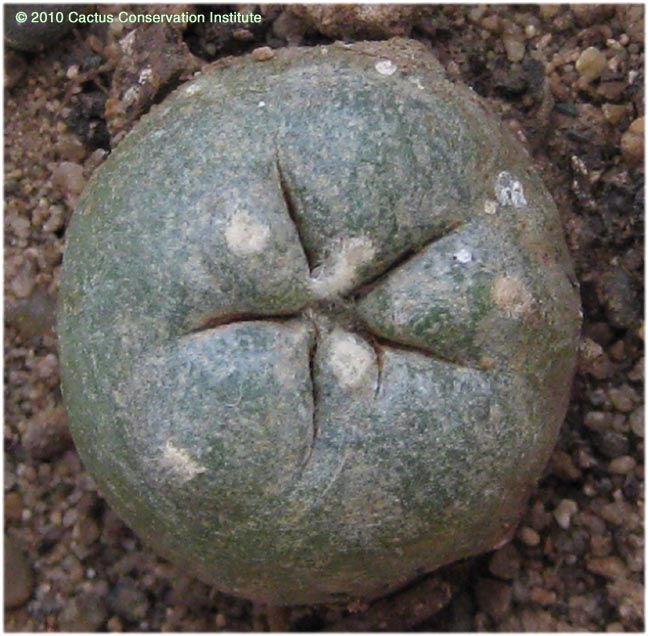
|
Lophophora alberto-vojtechii in Prague in
2009;
grafted for accelerated seed production.
This is species preservation in action.
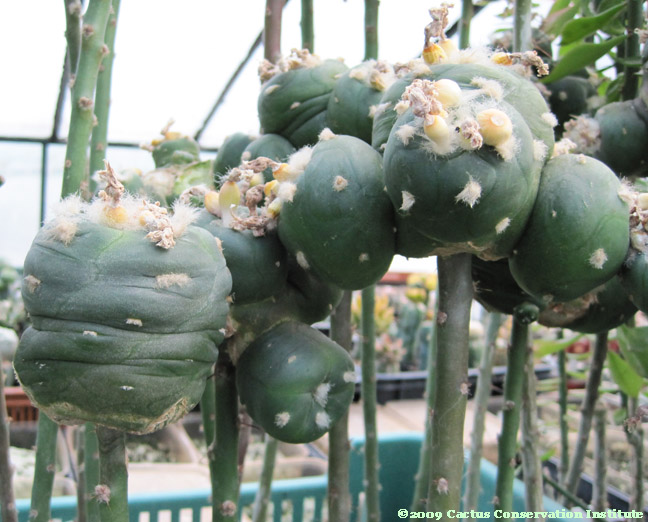
|
See
details
about Lophophora alberto-vojtechii in:
Jaroslav Bohata 2008 Cactus & Co 2 (12): 105-117.
and
Snicer et al. 2009. The Littlest Lophophora. CSJ
[download the latter as a 2.3 Mb PDF]
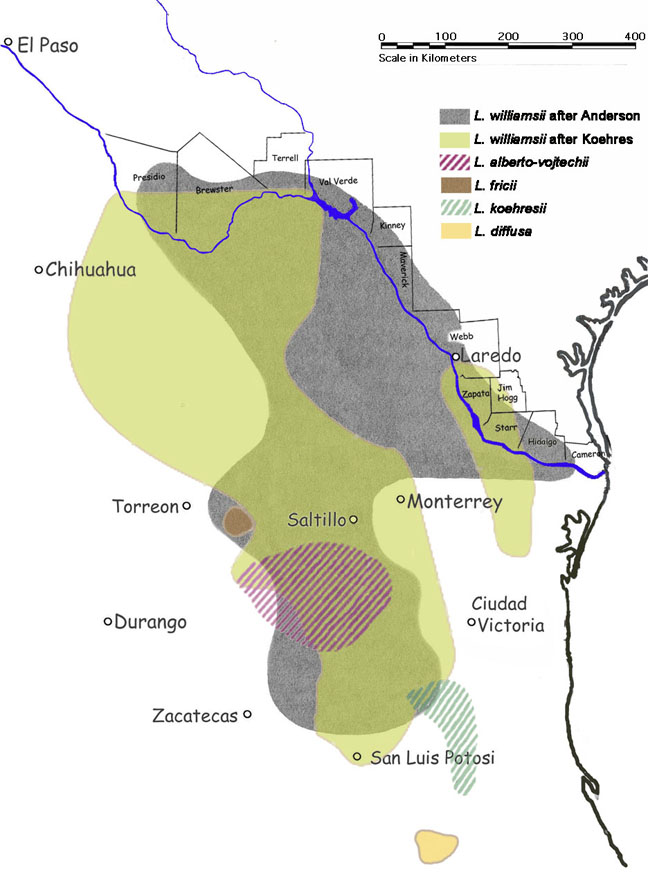
Various viewpoints of the
distribution of
the Lophophora species
(above merges the distribution maps of Anderson, Koehres & Jarda)
Of related interest:
Lophophora
spp. flowers
Habermann's
two Lophophoras
A closer look at Lophophora pentagona
A number of plants look similar to peyote
that
are not Lophophora
Many
plants are called peyote that are not Lophophora. See Anderson
1980
Contents ©
All images are © copyrighted by the photographers and/or the CCI and
are used with permission.
Reproduction is forbidden without prior written consent
Please
enjoy
our other featured articles:

by
Dana M. Price & Martin Terry
|

by Martin Terry
|

by Joselyn Fenstermacher
|
Cactus
Conservation
Institute
|













